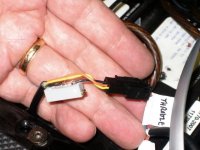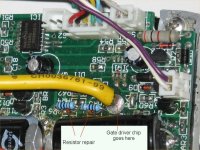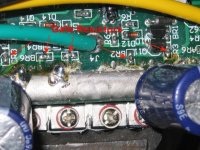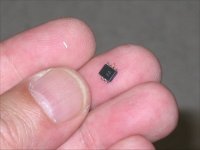CGameProgrammer said:Perhaps you should talk more about which replacement FETs to use. There are, after all, a few good choices.
Also, you might mention that heat dissipates from the case, particularly the bottom, and that there should be good airflow around the controller.
You think there'd be any benefit to slapping on a heat sink on that side of the controller, especially if it's not sitting out in the wind but in a bag somewhere?





